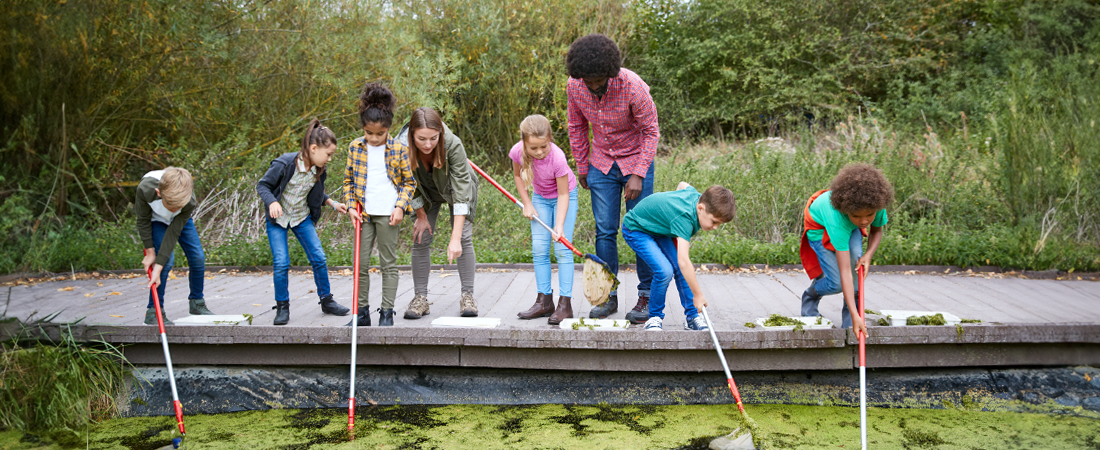A Promising Approach to Building Youth’s Environmental Literacy

For today’s youth to become tomorrow’s environmental stewards, they need to both learn about the natural world and understand how they can affect it. Out-of-school time (OST) programs are ideal places to engage youth in exploring science and nature right in their own communities and foster local environmental science literacy. Yet OST programs often lack the resources and expertise needed to guide youth in meaningful explorations of their local environments and prepare them to take action.
What if environmental education organizations and OST programs joined forces to help youth dive into rich environmental learning? Around the country, this is happening. Recently, EDC led a culturally responsive evaluation of one such partnership initiative funded by the National Oceanic and Atmospheric Administration (NOAA): 21st Century Community Learning Centers (21st CCLC) Watershed STEM Education Partnership Grants Program (Grants Program).
The North American Association for Environmental Education (NAAEE) administered the Grants Program, which supported 97 21st CCLC-funded OST programs in 18 states as they engaged 5,970 youth in studying the science of local watersheds. In the initiative, environmental educators and OST staff adapted NOAA’s Meaningful Watershed Educational Experience framework to provide enriching STEM-related projects in afterschool settings, summer camps, and weekend programs.
EDC evaluators interviewed and surveyed OST staff, participating youth, and educators from environmental organizations. Participants highly valued the direct engagement with the local environment. Youth responded positively to active hands-on investigations of environmental science in their communities, including the environmental action projects they completed.
The findings from EDC’s evaluation provided new insights on successes and challenges that are guiding Grants Program leaders in strengthening the initiative.
“One of our big findings was that these partnerships can work very well to engage youth in environmental science learning,” says Erin Stafford, who co-led the evaluation with Sara Greller. “OST staff bring vital knowledge of young people’s interests and cultural contexts. Staff at environmental education organizations are experts in science and techniques to help youth explore nature. When these two key partners collaborate, it can have a powerful influence on young people.”
Stafford and Greller also identified the following key considerations for similar programs and partnerships nationwide.
Develop Learning Experiences Collaboratively
“Co-designing programs builds collective buy-in,” says Stafford. “When you work hard to create an engaging program that is relevant to youths’ lives, you capture young people’s interest, and early collaborative planning is key to that.” Environmental science educators working with OST programs need to learn about each program’s local context, available resources and staff, and scheduling from their OST program staff partners. These vital early conversations help create a strong foundation for the partnership and contribute to sustainability.
Tailor the Program to Suit Local Needs
“Environmental education organization partners have to be flexible,” says Greller. “They need to build experiences that fit the daily realities of OST programs, while making OST programs feel less like school.” For example, an OST program that experiences inconsistent student attendance may need to focus hands-on activities in single program sessions, rather than stretching the learning over multiple days. Similarly, conditions such as restrictions on afterschool field trips or limited access to a nearby stream or creek will require environmental educators to rethink how they teach investigations. These and other factors make it key for partners to discuss which elements of a planned program, like those based on the Meaningful Watershed Educational Experience framework, will work as is and which will need to be modified.
Clearly Align Goals and Assess Staff Capacities
“We see the most success when environmental education and OST partners take time to align their organizational goals, as well as determine the roles that each partner will play,” says Stafford. For example, some OST programs have staff capacity to help facilitate activities with the support of environmental education organizations, while others need much more support. Developing a shared understanding of all partners’ expectations and roles is key to the success of the partnership and to achieving positive outcomes for youth.
Learn more about EDC’s evaluation work.